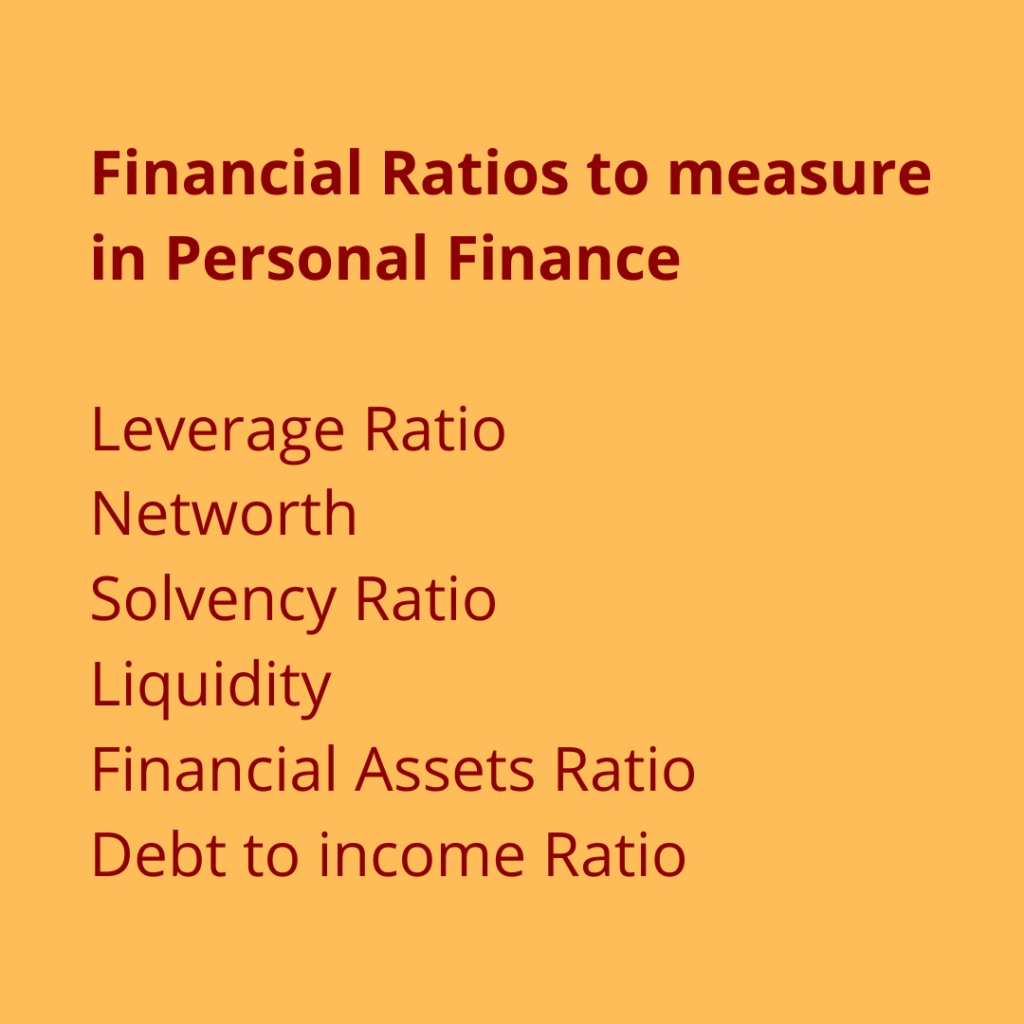A man/woman grows old working all his/her life. An important objective of working is to earn money to support one’s living. Is it required to focus purely on the objective of earning money alone ? I will leave it to each and everyone of you to see it in your perspective. But “money” cannot be ruled out in a modern society.
It is essential everyone gets educated on money at the school, how it works across the world and its effect on living. Sadly in most formal schools it is not taught.
Here in this article some “ratios / measures” are explained to evaluate financial position of an individual / family that will help to make an effective financial planning.
Evaluation Measures
Leverage Ratio
A leverage ratio tells the debt burden one has. Lower is the better.
Leverage Ratio = Total Liabilities / Total Assets
Networth
Net worth tells what one owns with him,
Net worth = Total Assets – Total Liabilities
Solvency Ratio
Solvency ratio is measure of how much one has ability to pay back debts, maximum is 1 (If there is no debt). Higher is the better. A lower negative value means there is no ability to pay back debts.
Solvency Ratio = 1 – Leverage Ratio
Liquidity Ratio
Liquidity ratio tells the ability (in terms of duration months) to sustain living without any income. A ratio of 4 to 6 is a good level.
Liquidity Ratio = Liquid Assets / Monthly Expenses
Financial Assets Ratio
Assets can be broadly of two types, Physical assets (Real estate, gold, machinery etc) and Financial Assets (Money in savings, mutual funds, annuity, etc.) It is important one be aware of how much financial asset they hold in comparison with the physical asset. This ratio is important since financial assets are increasingly becoming important in a portfolio. Higher is better when goals are near realisation.
Financial Assets Ratio = Financial Assets / Physical Assets
Debt to Income Ratio
Debt Income Ratio, tells the debt paid as a percentage of income each month, Anything more than 35 – 40 percent is seen as excessive debt servicing and does not do good in the long term.
Debt Income Ratio = Monthly Debt Servicing Commitment ÷ Monthly Income.
A key question that can come up for you is, “how often should I check these numbers?”. An ideal timeline is once in a year at least. These numbers are not to panic about your current financial position, but to become aware and expedite actions for the future good.
To improve your financial prudence and achieve financial freedom check here for financial advisory and AMFI certified mutual fund distributor Ganesan Thiru, he is author of 3 books Money Leaks, 1 Page Mutual Fund Plan & 1 Page Stock Market Plan.
